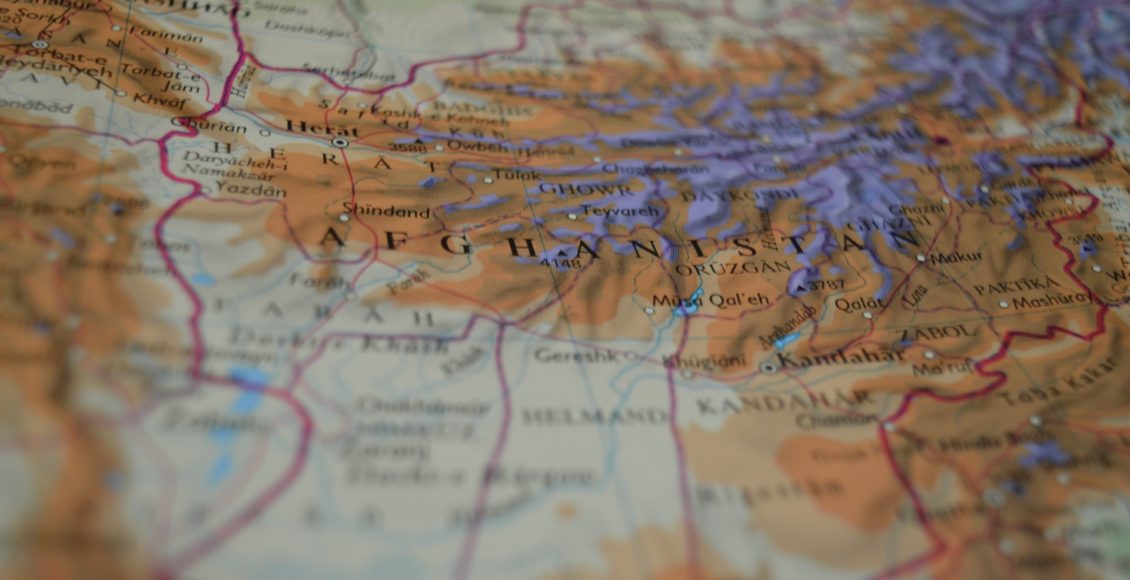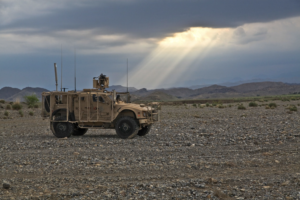The Graveyard of Empires: Peace Continues to Elude Afghanistan

After nearly two decades of conflict in the region, the subject of Afghanistan has slowly waned from public consciousness as fatigue, wariness and frustration reach all time heights with the current U.S administration. As the war approaches its 19th year, and in light of the upcoming primaries, it might serve the American public well to ask what exactly has been accomplished in Afghanistan and whether these two states could ever collectively move toward a path of peace. Ultimately, if we don’t address the stark, uncomfortable realities of these questions then citizens and soldiers alike will continue to be sacrificed for a conflict that started before many of them were even born.
In typical fashion, a series of bizarre tweets by the U.S President, which culminated in the ousting of John R. Bolton —Trump’s third national security advisor—launched Afghanistan back into the forefront of political discourse as the administration seeks to overhaul its U.S foreign policy approach before the elections. However, violence in Kabul and across the region has been ramping up for weeks amid political uncertainty; time and time again, whether it’s a Taliban instigated car bomb or a U.S drone strike, Afghanis continue to pay the steepest price of indiscriminate violence. Just yesterday the presidential polls closed in the midst of accusations of corruption and fraud leaving the country teetering on the verge of greater political chaos. Regardless of the 70,000 police, troops, and intelligence officials that were deployed by the state, nearly 15 were wounded at polling stations targeted by the Taliban. Between the disenchantment of the populace against corrupt elections, and the threat of violence at the polls, it is unsurprising that less than half of the 9 million registered to vote were expected to turn out.
Since late 2017, there have been approximately 14,000 U.S troops and NATO forces stationed within Afghanistan, which is still a huge decrease in numbers compared to the near 100,000 troops in 2009. Prior to September 5th, while the U.S, Kabul government, and the Taliban reached the precipice of an agreement to end the war, according to chief negotiator Zalmay Khalilzad, a huge facet of the deal was the U.S pledge to withdraw 5,400 troops in 20 weeks. Although, as Trump outlined haphazardly in his tweets, the car bomb that killed 10 in Kabul, including a U.S service member, effectively derailed any chance of a peace deal and flashy photo-op at Camp David à la 1978. The absurdity of an imagined secret meeting which would result in lasting peace, or all the noise about a Whitehouse in disarray are obfuscating what is really at the heart of this issue.
Unbeknownst to almost everyone, the major Taliban leaders and, separately, the President of Afghanistan, were going to secretly meet with me at Camp David on Sunday. They were coming to the United States tonight. Unfortunately, in order to build false leverage, they admitted to..
— Donald J. Trump (@realDonaldTrump) September 7, 2019
The idea that the President of the United States would formally meet with the Taliban, a former sworn existential enemy, at Camp David unsurprisingly disgruntled or confused members of his administration.
For over a decade now the approach taken in Afghanistan has morphed and evolved as key U.S strategies have failed. Although, retrospectively, it is simple to declare the invasion as an obvious strategic loss, it is worth it to peel back the layers and examine why and how after 18 years, billions of dollars, and thousands of lives, neither the region, nor the U.S are arguably safer than they were pre 9/11. First, it was a war to address American security threats operating out of Taliban controlled territory, then it ramped up to become a war to install a liberal western-style democracy, and now it has devolved into a protracted conflict that many across the political spectrum agree is drain on resources with no positive outcome in sight. From Senator Warren, to Sanders, to Trump one thing is clear about the central tenet of this new approach to the American ‘handling of Afghanistan’: we need to get out, now.
The U.S is now left with two decisions that will both inevitably have negative repercussions, whether intentional or not. First, several top diplomats warn that Afghanistan could collapse into outright civil war if Trump withdraws all American forces before a peace deal is signed between the central government in Kabul and the Taliban. However, on the other hand, maintaining the current hawkish U.S military presence in Afghanistan, and ongoing drone warfare, to support a fledgling centralized state has only propagated stronger antipathy towards American imperialism without bringing the fractured nation any closer to a consolidated democracy or peace. The central government in Kabul is irredeemably corrupt, and funnelling billions of dollars of aid into it has yet to strengthen its institutions or security forces. Ultimately, nothing can undo the damage inflicted during the past two decades, however with an economy and society pushed to its limits, a heavily militarized approach can no longer be the defining feature of American foreign policy in Afghanistan.

In a strictly military sense, as Trump seems to crudely outline in his comments this past Friday: we could win the war very quickly but “tens of millions of people will die…which we don’t want.” Regardless of whether this was some perverse attempt to showcase a sort of benevolence for restraining from an outright aerial bombing campaign, or just a flexing of military muscle, unfortunately Trump is not entirely wrong. As former Deputy National Security Advisor Ben Rhodes once stated, “the [American] military can do enormous things. It can win wars and stabilize conflicts. But the military can’t create a political culture or build a society.” The goal, especially since the Obama years, was no longer to just eradicate ‘security threats’ militarily, but to install a liberal, democratic nation that could become a key regional ally in the nebulous global fight to end “terrorism”. Similar to the experiences in Vietnam, Iraq, Iran, or Guatemala etc., to name a few, forcibly installing a ‘democratic’ government that lacks popular legitimacy in order to protect vested neoliberal interests has been the achilles heel of American foreign policy. Afghanistan is no different as the blowback of 18 years of warfare continues to unfold in unpredictable ways.
From the Mongols to the Soviets and now the Americans, Afghanistan has rightly been deemed an “unconquerable” region and often referred to as the graveyard of empires. While the decline of American global hegemony is certainly not the point of this article, it is important to note how for hundreds of years the region of Afghanistan has maintained relentless, staunch resistance to foreign invasion. This is a state that in recent history has only ever been defined on the world stage through the lens of war. A mere google search of “violence in Kabul” floods your screen with an over saturation of imagery and statistics, and once the American military withdraws, the media will eventually cease to concern itself with these matters but that doesn’t mean it no longer exists.

However, hope is always on the horizon, which can be seen in the comments of a civilian Karbalai Rahim Khaliqyar, a 55-year old furniture salesman right after the elections: “I voted for Afghanistan. If I don’t vote, and am just a bystander, it would be wrong. We all need to do our job.” With strong ethno-national divides and local autonomous communities the United States will certainly not be the first power to determine the nation’s fate—that responsibility should rightly lie in the hands of citizens like Karbalai.
Edited by Brian McGinn.
